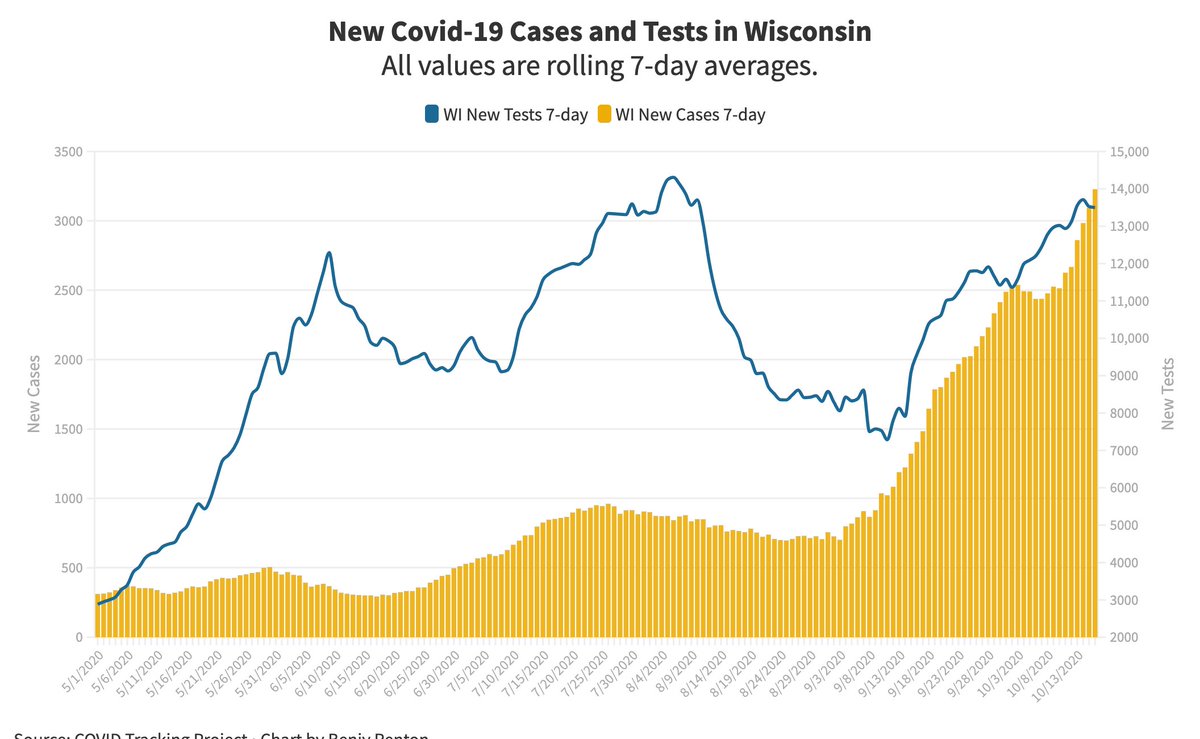
Much has been said about the success of @broadinstitute's genomics lab, which provides testing for 108 colleges in the Northeast. When we use @nytimes data to compare 88 of the 108 schools vs. 1400+ in the country, we see significantly lower case counts in schools that use Broad. 
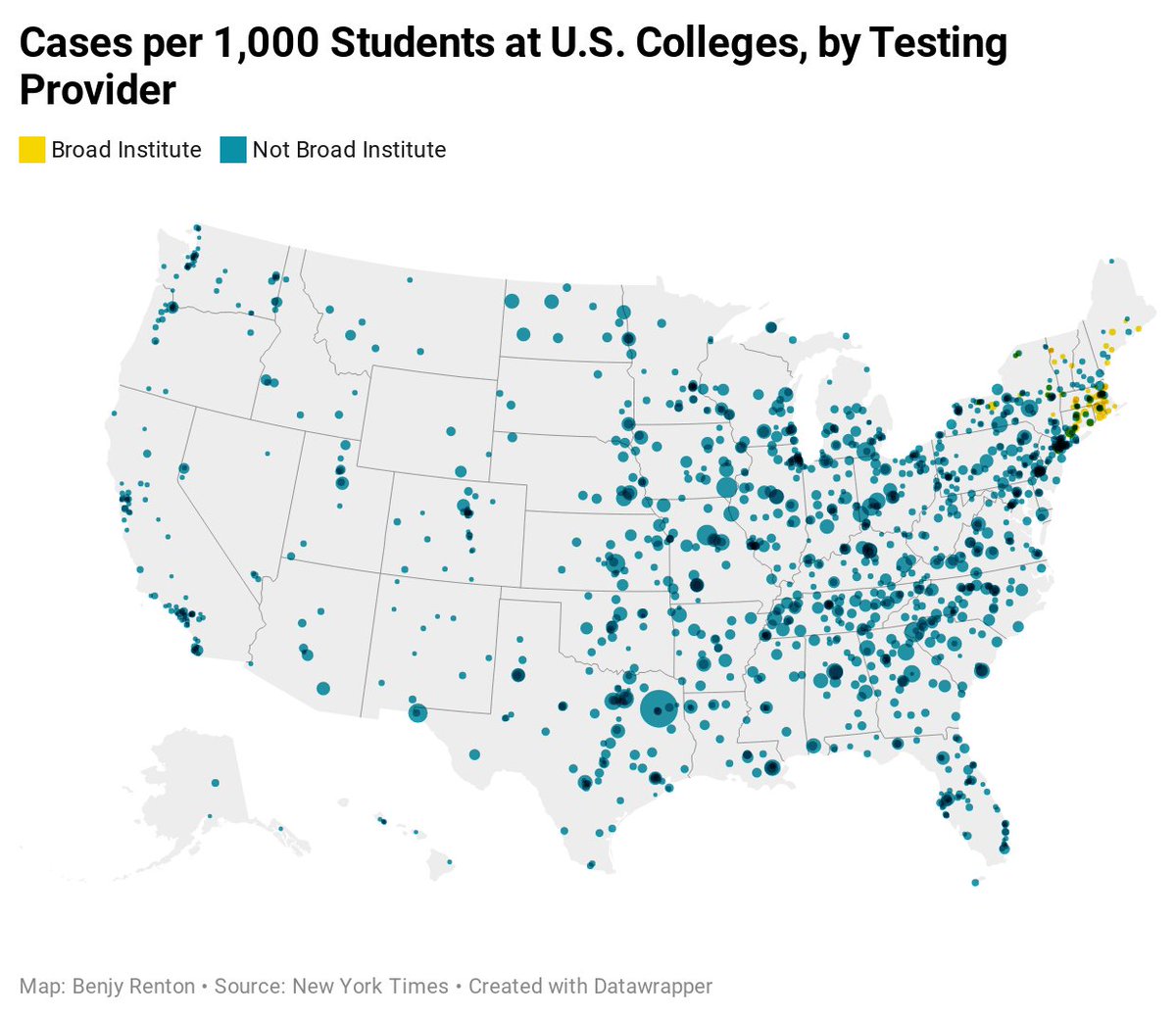
The map above displays Covid-19 cases per 1,000 students (to account for population differences) at 88 of the 108 schools that have contracted Broad for testing (all that are on this list). Many schools' case counts have been in the single digits.
broadinstitute.org/news/broad-ins…
broadinstitute.org/news/broad-ins…
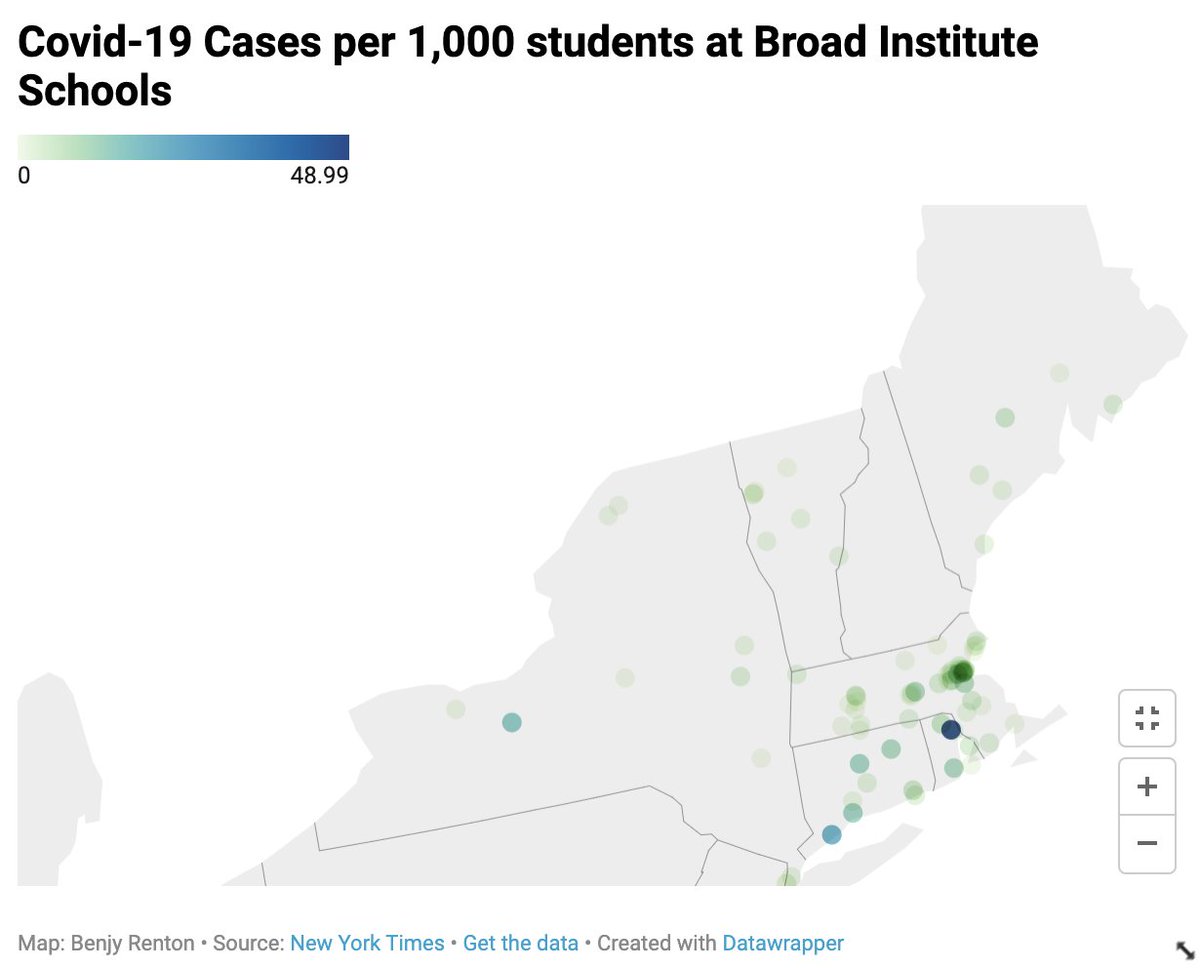
The results are wildly impressive — colleges that have contracted Broad for testing have an average of 4 cases per 1,000 students, compared to an average of 14.1 cases per 1,000 students of the other 1300+ schools in the @nytimes dataset.
nytimes.com/interactive/20…
nytimes.com/interactive/20…
Are there other factors that contribute to these schools' successes? Of course — many are in rural areas in the Northeast with low community transmission and have high levels of compliance with health precautions. In the coming weeks I'll be examining these confounding variables.
It's also worth noting that there are many other testing providers colleges across the country use — Broad is just a significant example as they conduct about 7% of the nation's total Covid-19 tests each day. Other colleges have in-house labs/facilities, which are beneficial. 

Here's a great piece on @broadinstitute's operations and how they converted to process tens of thousands of tests each day.
wbur.org/commonhealth/2…
wbur.org/commonhealth/2…
And here's an excellent piece from @melissakorn on Broad's successes in conducting high frequency testing at Northeast colleges.
wsj.com/articles/how-a…
wsj.com/articles/how-a…
In addition to testing, there's the issue of logistics. Broad's facility in Boston, with a network of couriers, allows colleges to drive tests/have them driven for same-day delivery. Tests are with an average 14-hour turnaround time. Here's a map of the 88 of the schools. 
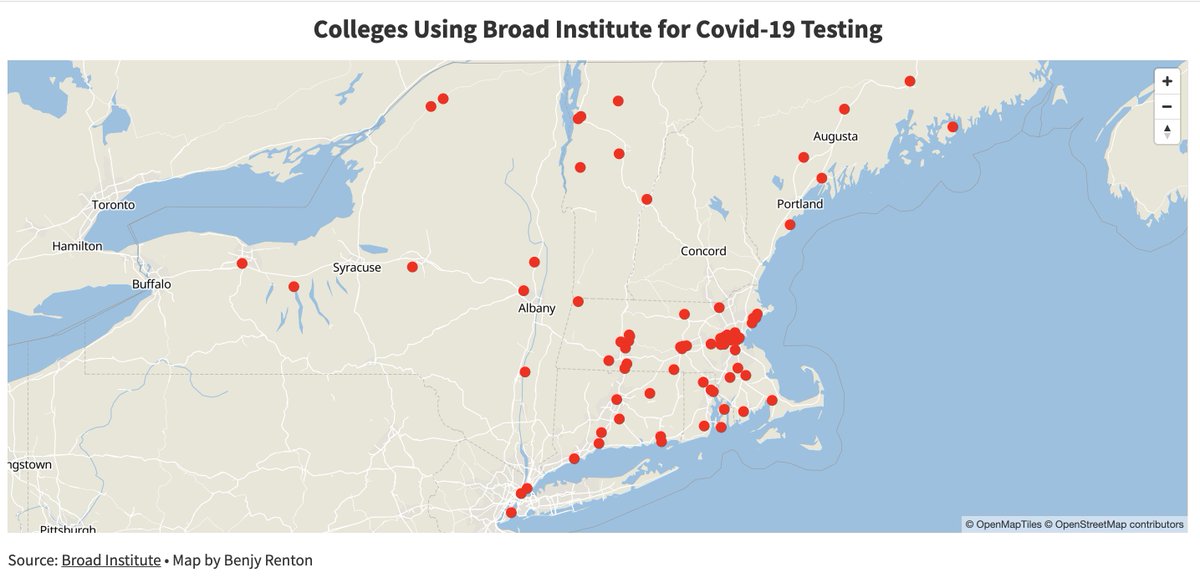
Why is this all successful? Experts like @ADPaltiel, @RWalensky, @gregggonsalves, @GYamey, @CT_Bergstrom, @lpachter, @sinabooeshaghi, @faythtan, @DrZackaryBerger and @jhuber (our college testing czars) have advocated for frequent testing with fast turnaround times.
Testing is obviously only one piece of the puzzle, but a huge one. Now let's go back to this map. Imagine a hub-and-spoke model for colleges around the country — essentially having multiple Broad-type labs — where colleges can easily send tests on a regular basis. 
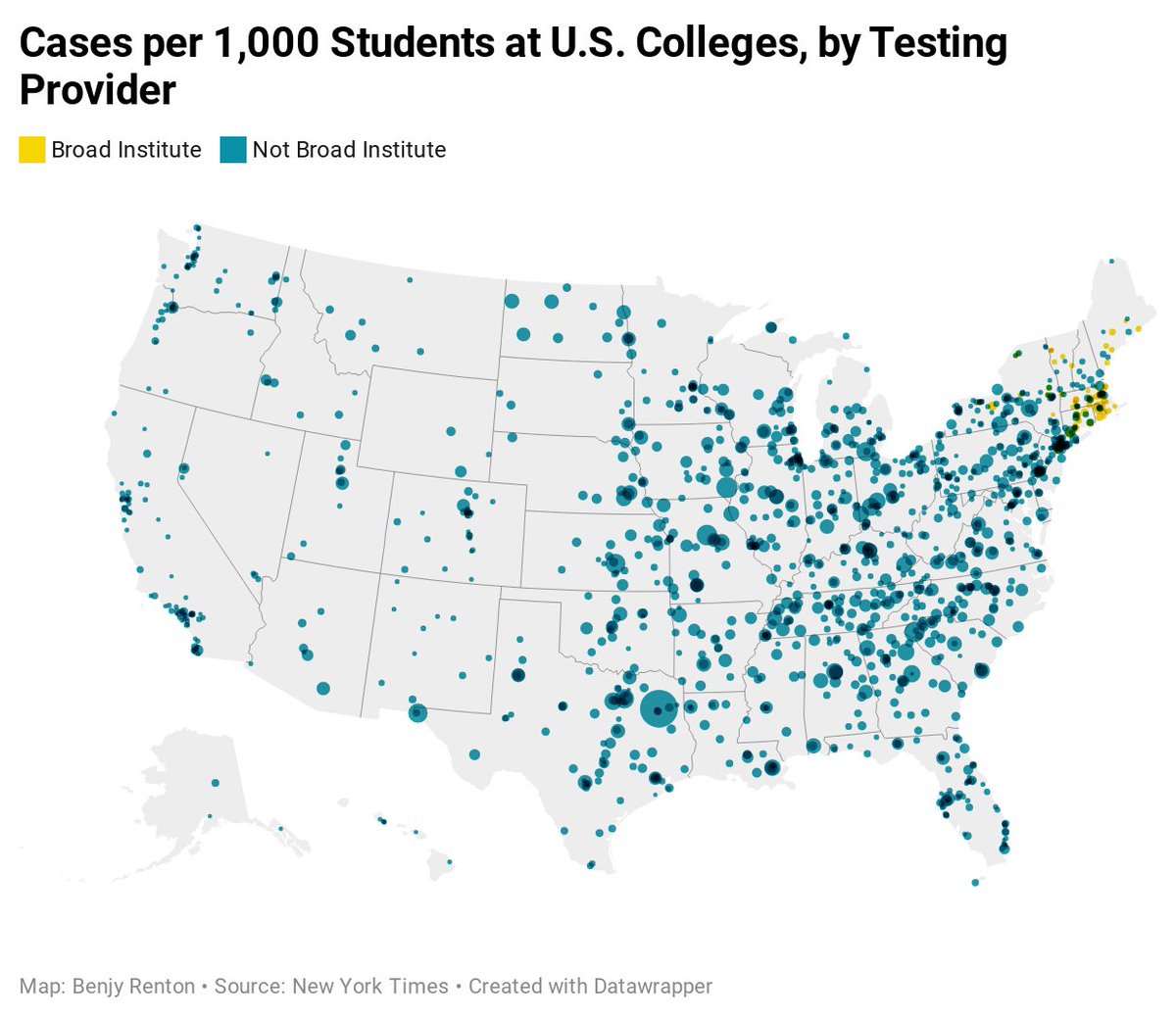
As colleges look towards planning for the spring, we must continue to emphasize the importance of testing as a key to success. I hope this short thread shows the benefits of conducting frequent testing with a robust logistical operation. Thanks @broadinstitute for their work!
• • •
Missing some Tweet in this thread? You can try to
force a refresh



